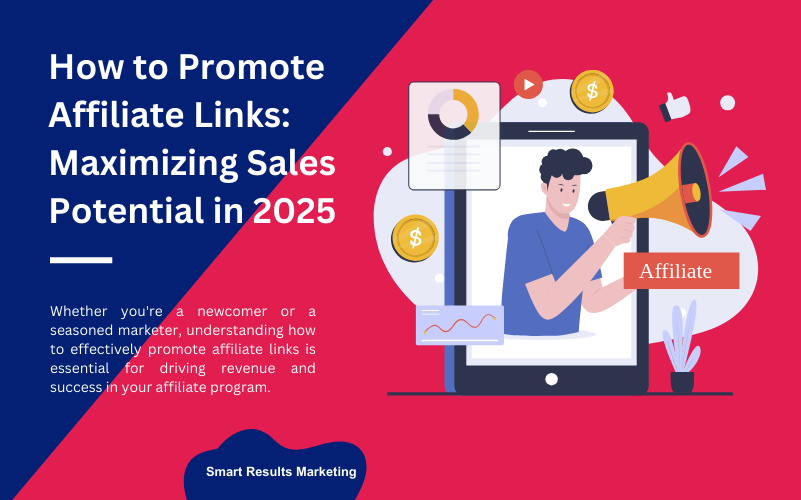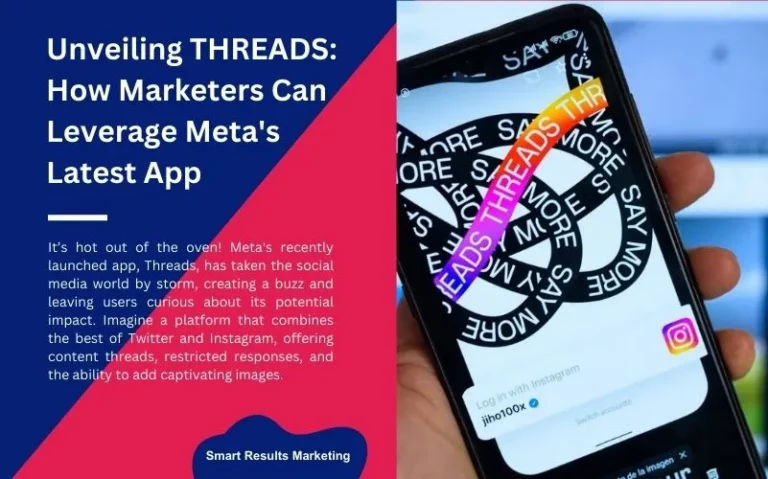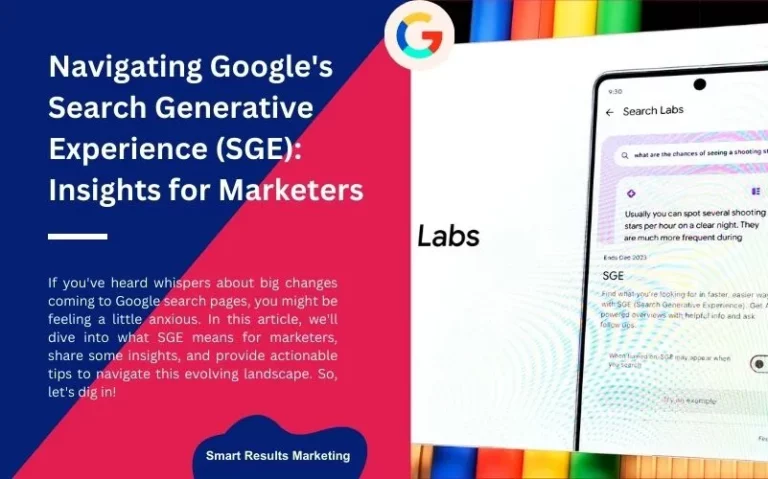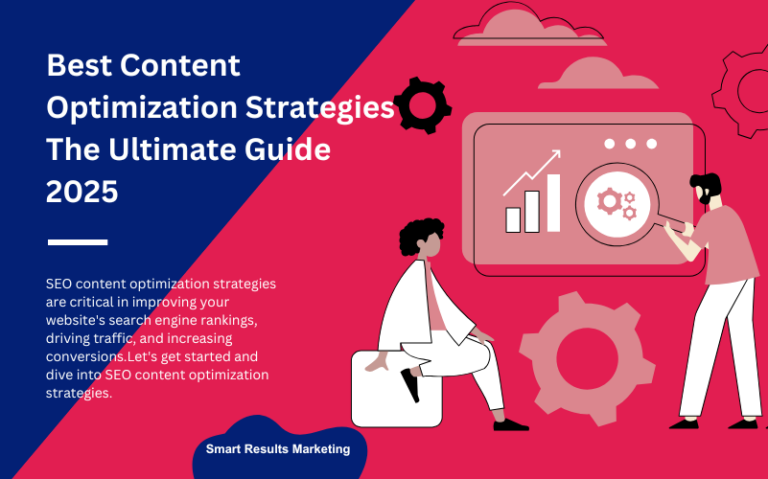How to Promote Affiliate Links: Maximizing Affiliate Sales Potential in 2025

Affiliate marketing, a dynamic and ever-evolving field, presents both challenges and opportunities. Whether you’re a newcomer or a seasoned marketer, understanding how to effectively promote affiliate links is essential for driving revenue and success in your affiliate program.
In this comprehensive guide, we will explore actionable strategies and expert insights to help you excel in the world of affiliate marketing.
How to Promote Affiliate Links
Chapter 1: Crafting Compelling Content for Affiliate Success
1.1 The Power of Blogging
Blogging remains a cornerstone of affiliate marketing.
Creating informative, engaging, and relevant blog content is crucial for attracting and retaining your target audience.
By producing high-quality posts that address your audience’s pain points and interests, you can establish your authority in the field and gain their trust.
💡Integrate affiliate links naturally within your blog posts, ensuring they add value and relevance to the content.
Example: Suppose you’re promoting fitness supplements. Write a blog post titled “Achieving Your Fitness Goals:
A Comprehensive Guide to Effective Supplements” and include affiliate links to the recommended products.
1.2 Enhancing User Experience with Affiliate Banners and Product Boxes
Strategically placing affiliate banners and product boxes within your blog articles can significantly enhance user experience and encourage click-throughs.
These visual elements catch the reader’s eye, making it easier for them to explore and purchase the products you’re promoting.
💡Use visually appealing banners and boxes that seamlessly blend with your blog’s design and layout.
Example: In an article about skincare routines, create a product box featuring affiliate links to the skincare products mentioned in the routine steps.
1.3 Engaging Exit-Intent Pop-ups
Exit-intent pop-ups are an effective way to retain visitors who are about to leave your website.
By offering a special discount, free resource, or exclusive content in exchange for their email address, you can build your email list and increase the chances of converting them into customers through affiliate promotions.
💡Test different pop-up designs, offers, and triggers to optimize conversion rates.
Example: Set up an exit-intent pop-up offering a downloadable e-book titled “Unlocking Radiant Skin: Your Guide to Effective Skincare.” Include affiliate links to recommended skincare products within the e-book.
Chapter 2: Mastering Strategic Advertising
2.1 Pay-Per-Click Advertising: Targeted Outreach
Pay-per-click (PPC) advertising is a powerful tool for reaching your target audience.
Craft compelling ad copy that highlights the unique selling points of the affiliate products you’re promoting.
Use targeted keywords and demographics to ensure your ads appear in front of the right audience.
💡Direct users to dedicated landing pages optimized for the specific affiliate products, enhancing the chances of conversion.
Example: Create a PPC ad campaign for a digital marketing course with ad copy such as “Master Digital Marketing: Enroll in Our Exclusive Course Today!” Direct users to a landing page with detailed course information and affiliate links to enrol.
2.2 Conversion-Optimized Landing Pages
Landing pages serve as a vital bridge between your ad campaigns and affiliate offers.
Craft landing pages that align with the ad’s messaging and provide comprehensive information about the products.
Use persuasive copy, compelling visuals, and clear calls to action to guide users toward making a purchase.
💡Leverage urgency and scarcity techniques, such as limited-time offers or countdown timers, to encourage immediate action.
Example: Create a landing page for a travel booking platform with details about exclusive travel deals. Include affiliate links to the featured hotels and destinations.
2.3 Analyzing Performance with Analytics
Analytics tools provide valuable insights into the effectiveness of your affiliate marketing campaigns.
Dive into metrics such as click-through rates, conversion rates, and user behaviour to understand which strategies are yielding the best results.
Use these insights to refine your approach and allocate resources effectively.
💡Set up conversion tracking and create custom dashboards in tools like Google Analytics for easy access to key performance indicators.
Example: Analyze Google Analytics data to identify which channels or keywords are driving the highest click-through and conversion rates. Adjust your ad budgets and strategies accordingly.
Chapter 3: YouTube Mastery: Visual Storytelling
3.1 Creating Engaging YouTube Content
YouTube is a goldmine for affiliate marketers, offering a platform to showcase products and engage with your audience visually.
Craft videos that provide value, solve problems and address your viewers’ needs.
Integrate affiliate links naturally within your video content, ensuring they align with the topic and resonate with your audience.
💡Incorporate storytelling elements to captivate your audience and make the affiliate products feel like a natural part of the narrative.
Example: Develop a video tutorial titled “Transform Your Makeup Routine: Achieve Flawless Looks with Our Favorite Beauty Products.” Demonstrate the use of affiliate beauty products in the tutorial.
3.2 Optimizing for YouTube SEO
YouTube is the second-largest search engine, making SEO optimization essential for visibility. Incorporate these keywords into your video titles, descriptions, and tags to increase the chances of your videos appearing in search results.
💡Craft attention-grabbing thumbnails and titles to encourage clicks and views.
Example: Optimize a video showcasing home organization tips with a title like “Clutter-Free Living: Organize Your Home with Expert Tips and Recommended Storage Solutions.”
3.3 Engaging Viewers with Visual Enhancements
Enhance your YouTube videos with visual elements that engage viewers and encourage them to explore your affiliate links.
Incorporate on-screen annotations, graphics, and text overlays to highlight products, discounts, or special offers.
These visual enhancements can direct viewers’ attention and drive them to take action.
💡Use a clear and concise call to action within your video to guide viewers to click on affiliate links in the video description.
Example: Include an on-screen annotation in your video that encourages viewers to “Learn More and Shop Now” by clicking on the affiliate links in the video description.
Chapter 4: Expert-Level Email Strategies
4.1 Personalized Email Campaigns
Craft emails that provide value, insights, and actionable tips before introducing affiliate products.
Build a sense of trust and authority before presenting the affiliate offerings as solutions to subscribers’ needs.
💡Segment your email list based on subscriber preferences and behaviours to deliver targeted content.
Example: Send a personalized email titled “Unleash Your Productivity: Proven Strategies and Exclusive Offers.” Share productivity tips and insights before introducing affiliate tools and resources.
4.2 Building Trust with Bridge Pages
Bridge pages play a crucial role in building trust and facilitating conversions.
Create informative bridge pages that provide context, value, and insights about the affiliate products.
Use video content, comparison tables, or expert insights to guide subscribers from curiosity to action.
💡Highlight the benefits and unique features of affiliate products on the bridge page, addressing potential questions and concerns.
Example: Design a bridge page titled “Elevate Your Home Gym: Discover Top Fitness Equipment and Training Programs.” Provide a video showcasing equipment usage and benefits, followed by affiliate links for each product.
4.3 Integrating Affiliate Links in Courses and Products
Infuse your courses and digital products with valuable affiliate offerings.
Embed affiliate links within the course content, offering learners practical solutions and tools.
Enhance their learning journey by providing supplementary materials, such as downloadable guides or checklists, that feature affiliate links.
💡Create dedicated modules or sections within your courses that focus on leveraging specific affiliate products for maximum results.
Example: Enhance a digital course on social media marketing with a module titled “Harnessing the Power of Tools: Recommended Software for Efficient Campaigns.” Include detailed insights and affiliate links for each recommended tool.
Chapter 5: Crafting Social Media Success
5.1 Tailored Stories for Social Platforms
Each social media platform offers a unique storytelling canvas. Craft posts that resonate with the platform’s tone and your audience’s preferences.
Customize your content for platforms like Instagram Reels, Facebook Groups, and Twitter Chats to create authentic interactions and conversations.
💡 Utilize native features of each platform, such as Instagram’s Reels or Stories, to engage users and creatively showcase affiliate products.
Example: Share a quick Instagram Reel featuring a “Day in the Life” routine, highlighting the use of affiliate products throughout the day.
5.2 Amplifying Reach through Influencer Collaboration
Influencer partnerships amplify your reach and credibility.
Co-create content that seamlessly integrates affiliate products, providing authentic endorsements and expanding your visibility.
💡Establish clear expectations and guidelines for influencer collaborations to ensure a cohesive and value-driven partnership.
Example: Partner with a wellness influencer to create a series of posts featuring affiliate wellness products, backed by personal testimonials and usage examples.
5.3 Curating a Valuable Affiliate Resource Hub
Your website’s resource page serves as a treasure trove of affiliate opportunities.
Create a dedicated resource page that showcases top-performing affiliate programs, complete with descriptions and benefits.
Regularly update the page to provide fresh opportunities for your audience.
💡Organize affiliate programs based on categories or niches, making it easy for visitors to discover relevant opportunities.
Example: Develop a comprehensive resource page titled “Explore Top Affiliate Programs: Your Gateway to Health, Wealth, and Lifestyle.” Highlight affiliate programs in health, finance, and lifestyle categories.
Chapter 6: Expert Optimization and Insights
6.1 Harnessing Affiliate Marketing Tools
Affiliate tools act as your strategic allies in optimizing campaigns. Leverage tools like Lasso WP to seamlessly manage and track affiliate links.
Capitalize on advanced features to create visually appealing displays and streamline link optimization.
💡Leverage features like link grouping and performance analytics to refine your affiliate marketing strategies.
Example: Utilize Lasso WP to create an affiliate product showcase, providing visitors with a comprehensive overview of featured products and their benefits.
6.2 Navigating with Precision: Click Tracking Tools
Click tracking tools serve as your navigational compass, guiding your strategy with precision. Dive into Google Analytics to dissect user behaviour, analyze click-through rates, and identify high-performing channels.
Use these insights to fine-tune your approach and focus on what works.
💡Set up goal tracking and custom reports in Google Analytics to monitor affiliate link performance and conversions.
Example: Analyze Google Analytics data to determine which traffic sources yield the highest affiliate link click-through rates. Adjust your promotional efforts to optimize these channels.
6.3 Mastering A/B Performance Optimization
A/B testing empowers you to refine your strategies systematically.
Experiment with different variables, such as visuals, copy, and calls to action, to uncover insights that drive better performance.
Continuously iterate and optimize based on data-driven findings.
💡Test one variable at a time to isolate the impact of changes and gather actionable insights.
Example: A/B test two versions of an email campaign—one with a direct call to action and another with a softer, value-focused approach.
Analyze open rates and click-through rates to determine the most effective approach.
Conclusion: Expert-Level Affiliate Success – How to Promote Affiliate Links
As we conclude this comprehensive guide, you stand at the crossroads of expert affiliate marketing.
Armed with actionable strategies and insights, you possess the tools to orchestrate a symphony of success in the affiliate landscape.
Remember, expertise doesn’t mean complexity; it’s about merging professionalism with approachability.
By implementing these expert strategies, you’re embarking on a journey that blends artistry with analytics, forging meaningful connections with your audience and generating substantial revenue.
Your affiliate marketing voyage has the potential to resonate far beyond transactions, creating a harmonious symphony of value, impact, and growth.
So, with your expert baton in hand, step onto the stage and conduct your affiliate symphony with finesse.





